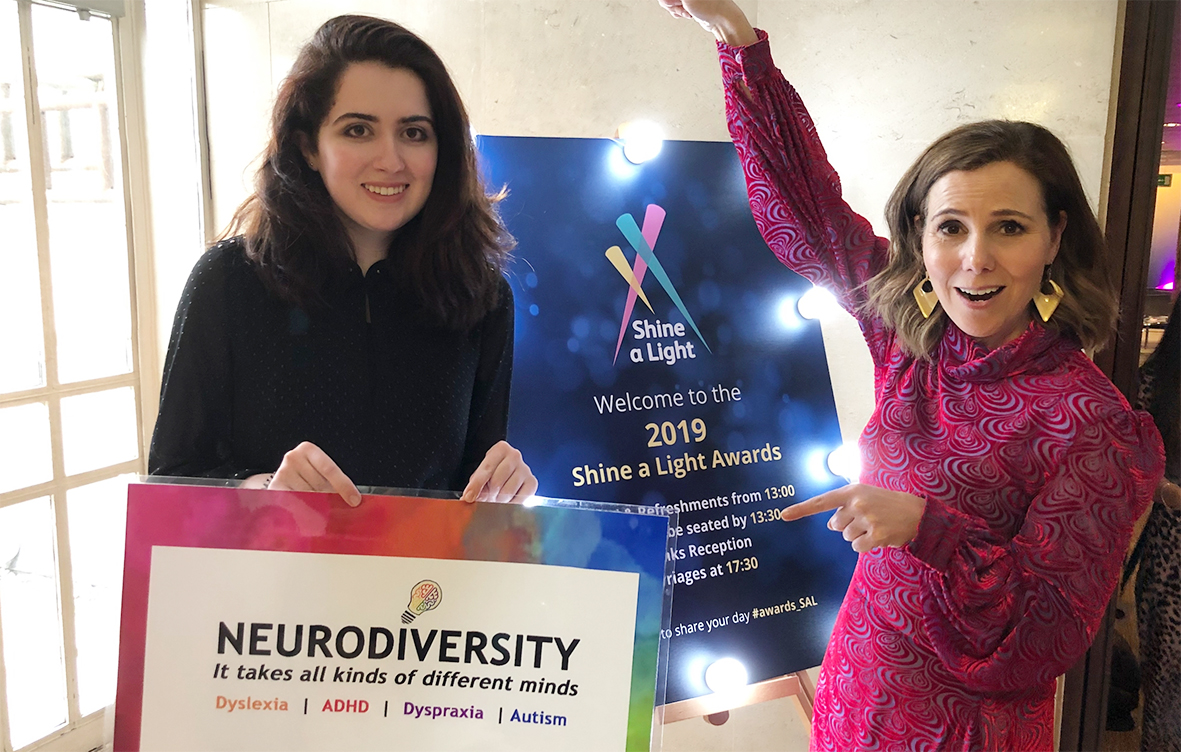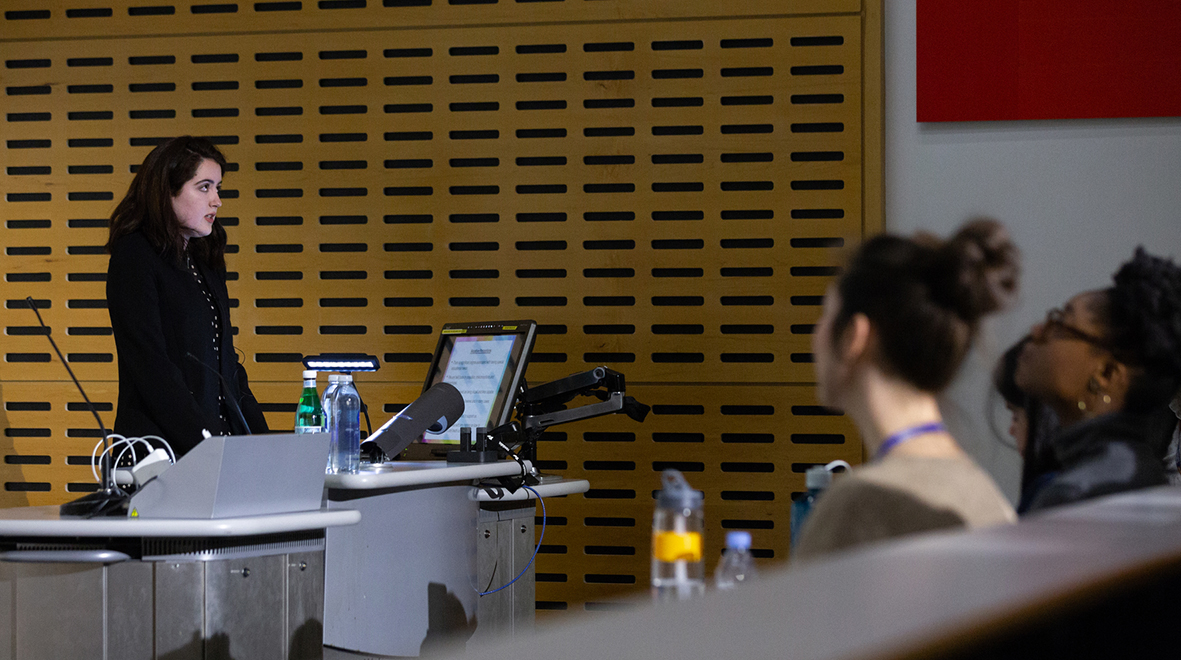
Siena Castellon, a 16-year-old award-winning autism advocate, makes the case for why diversity should be expanded to include neurodiversity.
Most universities have embraced diversity. They recognise that having students and faculty with diverse backgrounds, experiences and perspectives leads to increased creativity, innovation and productivity. However, most universities, focus their diversity initiatives on race, ethnicity and gender. Universities also prioritise initiatives that aim to improve social mobility, which is why many of the STEM work placements or summer school programs are only available to students from low-income families. Although it is important to address the under-representation of Black and Minority Ethnic students (BME), women and students from disadvantaged backgrounds, it is just as important to include people who are neurodivergent – a minority group that is often forgotten.
I am a 16-year old student in Year 12 at King’s College London Maths School, one of only two state specialist maths schools in the UK. I am autistic, dyslexic and dyspraxic. I also have ADHD. Each one of these conditions is considered a disability under the law. Yet, many of the summer programmes that aim to increase diversity or to improve social mobility, do not include disabilities or neurodiversity. I am not eligible to apply for some summer programmes because I am not entitled to free school meals and have parents who went to university. However, the fact that I do not come from a disadvantaged socioeconomic background, does not change the fact that being autistic is also a significant disadvantage. Although some of us may not face the same barriers as students from disadvantaged socioeconomic backgrounds, the barriers we face are just as effective at preventing us from achieving our potential. Shockingly, only 16% of autistic adults are employed. This is one of the lowest employment rates of any group.
The benefits of neurodiversity
Companies are beginning to recognise that there are significant benefits to having neurodivergent employees. For example, GCHQ employs more than 100 dyslexic and dyspraxic “neurodiverse spies” to harness their ability to decipher facts from patterns, their increased 3D spatial-perception and their creativity. If universities, companies and organisations are going to benefit from having neurodivergent students and employees, it is important to create summer programs and work placements for neurodivergent students that are specifically designed to support autistic students and students with learning differences.
My passion for physics was ignited years before I was taught physics in school. I vividly recall sitting in a classroom at Stanford University being taught Newtonian mechanics by a university professor. I was 10. I was fortunate to have been accepted into a two-week physics programme for academically gifted students run by Stanford Pre-Collegiate Summer Institutes. I was also fortunate that my parents could afford to send me. The physics programme opened up a whole new world for me. It was the first place where my intellectual curiosity was nurtured and encouraged. It was also the first place where I was amongst like-minded students; children like me who I could finally be myself around.
Being autistic is not easy
Being an autistic girl who loves physics and maths is not easy either. It has meant that I have been bullied at school for most of my life. It has also meant that in order to try to “fit in” I have had to avoid talking about things that interest me, such as physics and maths. It has been my experience that it is social suicide for a girl to be open about her love of maths and physics. I have never been accepted or understood by my classmates. I spent much of my childhood being ostracised and rejected by my peers and being called mean names, such as “weird,” “freak” and “strange”. Thankfully, the STEM summer programmes I have attended have been a safe haven and a place where I got a glimpse of what my future could be like. During my summers, I am able to openly embrace my passion for physics and I am surrounded by young people who build me up and who understand me. Last summer, I spent two weeks studying theoretical physics at the Perimeter Institute for Theoretical Physics in Canada. I also had a one week physics work placement at Cambridge University’s Cavendish Laboratory. My experience has taught me that academically gifted students with special educational needs (SEN) are being let down by a school system that does not cater for students like us. Much too often we are underestimated and dismissed or, as has been my personal experience with some summer programmes, overlooked and ignored.
In November 2018, I launched Neurodiversity Celebration Week, a campaign that aims to encourage schools to change the way they perceive their SEN students. Much too often, we are seen as “problems” and the focus is placed on our challenges and weaknesses. I want to flip the narrative so that schools also recognise our many strengths. With the right support and encouragement, SEN students have the potential to be talented scientists and to make significant contributions to the scientific community. I believe that the best way to bring this about is to challenge the stigma associated with autism and to address the stereotypes and misconceptions that many people still have about autism and learning differences. My Neurodiversity Celebration Week currently has over 270 schools and over 265,200 students taking part this May 13-17. It is also being supported by 22 charities and organisations, including the ADHD Foundation, the British Dyslexia Association, the Dyspraxia Foundation and Anna Kennedy Online.

I believe that organisations must create programmes that are specifically designed to identify and develop the talents of neurodivergent students. I am thrilled to be the student representative of Professor Sara Rankin’s 2eMPower project, which aims to support secondary students who are autistic or who have learning differences to pursue careers in STEM. Professor Rankin recognises that neurodivergent students enrich the STEM community and that our innovative approaches, unique insights, problem solving skills, ability to think outside of the box and creativity are assets that will benefit the scientific community. It is time for universities and organisations to create programmes that are specifically designed to increase the representation of autistic students and students with learning differences, because we have a lot to contribute, but have many obstacles to overcome and are very much in need of a helping hand. If organisations are going to succeed in creating a truly diverse and inclusive environment, they will need to broaden their vision to include neurodivergent students, faculty and employees.
Siena Castellon (@QLMentoring) is a neurodiversity advocate who supports and mentors dyslexic, dyspraxic and autistic students and students with ADHD through her website Quantum Leap.
As someone who graduated in the late 1980s from Imperial College, I can tell you that there were numerous students there who were excellent at physics and maths, just like the Siena. Many of these people would today be diagnosed as autistic, because the definition of autism has since been dramatically widened. These socially awkward students all went on to get well paid jobs.
Mild neurological variations have always been with us and most people overcome them. Severe neurological problems like DSM3-type autism (as used for diagnosis up to 1993) and Down Syndrome are entirely different. These people will likely never have an unsupported job, because they lack the mental capacity to do a regular job. However, if you apply the science and treat the underlying dysfunctions (like NKCC1/KCC2 imbalance in Down Sydrome and much severe autism) you can improve the outcome – still, they will not end up as lucky as Siena.
It is good to have some “nerdy people” and where would a place like Imperial College, or MIT, be without them? Does it really help if you give them a label?
Does the GP working for the NHS want his patients to know he was diagnosed as a child with ADHD? I guess he would rather forget that label.
It is hard to see any benefits from severe autism, Down Syndrome, Fragile-X etc and there is nothing to celebrate. This is why at places MIT they research therapies for such conditions; perhaps Imperial College should be doing likewise?